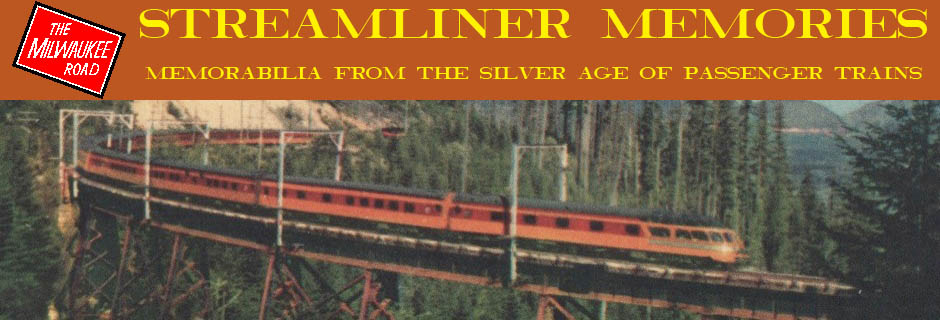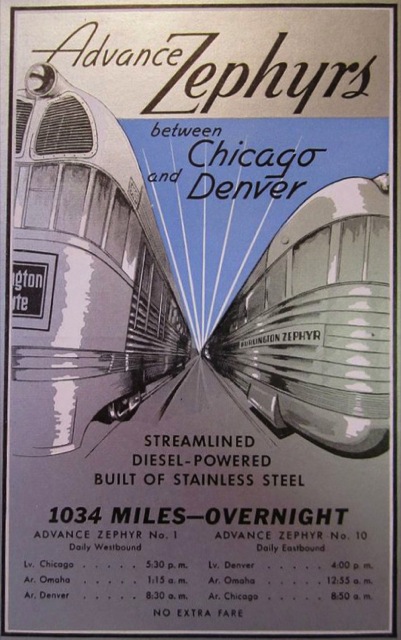The Burlington not only had to compete with the Union Pacific in the Chicago-Denver market, it had two other entrenched rivals in the Chicago-Twin Cities corridor. The routes of both of the other railroads, the Chicago & North Western and Milwaukee Road, were shorter than the Burlington’s and also served Milwaukee, while the largest city on the Burlington route was LaCrosse. While the Zephyr was still on display at the Chicago fair, the other two roads introduced 90-minute, non-step service on the 85 miles between Chicago and Milwaukee on July 15, 1934 using conventional steam locomotives and heavyweight cars.
Tests by the Burlington showed that Zephyr streamliners could cut the time required for a Chicago-to-Twin Cities trip from 10-1/2 to around six hours. Both the Milwaukee and the C&NW elected to compete with the Twin Zephyrs using equally fast trains powered by steam locomotives. Achieving that time reduction with steam locomotives, which require frequent replenishments of water and fuel, required careful planning and advance preparation.

The C&NW was the first to speed its Chicago-Twin Cities service, starting on January 2, 1935. Reflecting the fact that Chicago and the Twin Cities were about 400 miles apart and the accelerated trip would take about 400 minutes, the railroad called its new train the 400. This was also a cultural reference to the fabled 400 families that supposedly made up New York high society. In fact, the train initially required seven hours–420 minutes–to go the 409 miles between Chicago and St. Paul.














